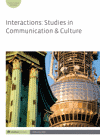
Full text loading...

Lifestyle segmentation has been prominently used in marketing and communication to define consumption patterns and marketing communication processes. This article underlines the significance of a multidimensional approach to lifestyle analysis. Bourdieu’s statistical technique of ‘multiple correspondence analysis’ permits to find unexpected dimensions and offer visual representation of the relationships between categories. This technique has been used to re-analyse Konda’s 2008 Lifestyle Research data, which was one of the most influential and widely circulated lifestyle segmentation research papers of its time, that introduced the categories of ‘anxious-moderns’ and ‘conservative-moderns’. The patterns identified through multidimensional analysis have been used in discourse analysis that permit to interpret the complex and heterogeneous nature of social dynamics.

Article metrics loading...

Full text loading...
References


Data & Media loading...

Publication Date:
https://doi.org/10.1386/iscc_00005_1 Published content will be available immediately after check-out or when it is released in case of a pre-order. Please make sure to be logged in to see all available purchase options.